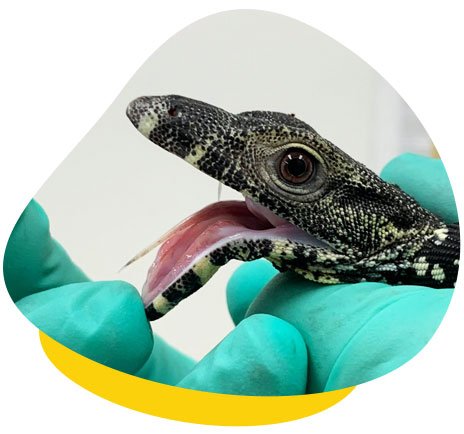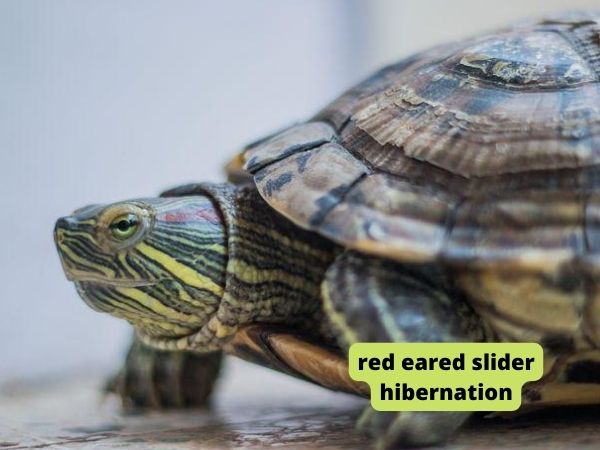Understanding The Causes Of Metabolic Bone Disease In Turtles
Are you curious about the causes of metabolic bone disease in turtles? This condition, commonly seen in turtles, occurs when there is an imbalance in their calcium and phosphorus levels. But what contributes to this imbalance? In this blog post, we will delve into the various factors that can lead to metabolic bone disease in turtles. From inadequate diet and improper lighting to lack of exercise, we will uncover the key reasons behind this debilitating condition. So, let’s dive into the world of turtles and explore the causes of metabolic bone disease together.
Causes of Metabolic Bone Disease in Turtles
Metabolic Bone Disease (MBD) is a common ailment that affects many turtles. It is a condition characterized by the softening and weakening of the bones, leading to deformities, fractures, and other health issues. The primary causes of MBD in turtles can be attributed to inadequate nutrition, lack of UVB radiation, and improper husbandry practices. Let’s delve deeper into each of these causes to understand how they contribute to the development of metabolic bone disease in turtles.
Inadequate Nutrition
Nutrition plays a vital role in the overall health and well-being of turtles. Turtles require a balanced diet that includes a variety of foods to meet their nutritional needs. Inadequate nutrition, especially a diet lacking in calcium and vitamin D3, is a significant factor contributing to the development of metabolic bone disease.
Here are some factors that can lead to inadequate nutrition in turtles:
Inappropriate Diet
Turtles are omnivores or herbivores, depending on their species. It is important to provide them with a diet that mimics their natural feeding habits. Many pet turtles suffer from MBD due to a diet that consists mainly of inappropriate foods, such as commercial turtle pellets, without enough calcium-rich sources.
Imbalance of Calcium and Phosphorus
Calcium and phosphorus are essential minerals for healthy bone development. However, an imbalance between these two minerals can hinder calcium absorption, leading to MBD. Turtles need a higher calcium-to-phosphorus ratio (2:1) in their diet to avoid this problem.
Low Vitamin D3 Levels
Vitamin D3 is crucial for the absorption and utilization of calcium. Turtles can naturally synthesize vitamin D3 by basking in UVB light. However, without adequate exposure to UVB radiation or proper supplementation, turtles may suffer from vitamin D3 deficiency, impairing calcium absorption and resulting in MBD.
Lack of UVB Radiation
UVB radiation is essential for turtles to produce and process vitamin D3, which is crucial for calcium metabolism. In their natural habitat, turtles bask under sunlight to absorb UVB rays. However, pet turtles housed indoors or in enclosures without access to natural sunlight are often deprived of UVB radiation. This lack of exposure to UVB light can lead to vitamin D3 deficiency and subsequently contribute to the development of MBD.
Improper Husbandry Practices
Proper husbandry practices are crucial for maintaining the overall health and well-being of turtles. Inadequate living conditions can contribute to the development of MBD. Some common improper husbandry practices that can lead to metabolic bone disease include:
Inadequate Habitat Size
Turtles require a spacious and appropriately sized habitat to move around and exercise. Insufficient space can lead to limited physical activity, which is essential for bone development. Lack of exercise can weaken the bones and make turtles more susceptible to MBD.
Poor Temperature Regulation
Turtles are ectothermic creatures, meaning they rely on external heat sources to regulate their body temperature. Incorrect temperature gradients within the habitat can hinder their metabolic processes, including calcium absorption. Inadequate temperature regulation can contribute to the development of metabolic bone disease.
Inadequate Hydration
Maintaining proper hydration is crucial for turtles’ overall health. Dehydration can affect various physiological processes, including calcium metabolism. Turtles should have access to clean, fresh water at all times to prevent dehydration-related complications, including MBD.
Stress and Lack of Enrichment
Stress and environmental monotony can also contribute to the development of metabolic bone disease. Turtles thrive in enriching environments with appropriate hiding spots, basking areas, and stimulation. Stressful living conditions can weaken their immune systems and overall health, making them more susceptible to MBD.
In conclusion, metabolic bone disease in turtles is primarily caused by inadequate nutrition, lack of UVB radiation, and improper husbandry practices. Providing a balanced diet rich in calcium and vitamin D3, ensuring proper UVB exposure, and maintaining optimal husbandry conditions are crucial steps in preventing and managing metabolic bone disease in turtles. By addressing these causes and providing appropriate care, turtle owners can help their shelled companions lead healthy, active lives.
Metabolic bone disease in Turtles and Tortoises
Frequently Asked Questions
What are the common causes of metabolic bone disease in turtles?
Metabolic bone disease in turtles is often caused by a combination of factors, including improper diet, lack of exposure to ultraviolet (UV) light, and inadequate calcium and vitamin D3 levels. These factors can lead to a calcium and phosphorus imbalance in the turtle’s body, affecting the proper growth and development of their bones.
How does an improper diet contribute to metabolic bone disease in turtles?
An improper diet lacking in essential nutrients, especially calcium, can contribute to metabolic bone disease in turtles. Turtles require a balanced diet that includes a variety of calcium-rich foods, such as leafy greens and certain fruits. A diet solely based on low-calcium foods can lead to calcium deficiency and weaken the turtle’s bones over time.
Why is exposure to ultraviolet (UV) light important in preventing metabolic bone disease?
Exposure to UV light is crucial for turtles as it helps them synthesize vitamin D3, which is essential for calcium absorption. Without adequate UV light exposure, turtles cannot effectively utilize the calcium in their diet, leading to metabolic bone disease. Providing UVB lighting in their habitat is necessary to prevent this condition.
Can lack of physical activity cause metabolic bone disease in turtles?
Lack of physical activity can indirectly contribute to metabolic bone disease in turtles. Regular exercise helps stimulate bone growth and development by increasing blood circulation. Insufficient physical activity can lead to weakened bones, making turtles more susceptible to metabolic bone disease.
Are certain species of turtles more prone to metabolic bone disease?
While metabolic bone disease can affect all turtle species, some are more prone to developing the condition. Species that require higher levels of UV light exposure or have specific dietary needs are generally more susceptible. For example, aquatic turtles that primarily rely on a fish-based diet might lack the necessary calcium intake, increasing their risk of metabolic bone disease.
How can I prevent metabolic bone disease in my turtle?
To prevent metabolic bone disease, ensure that your turtle has a balanced diet consisting of calcium-rich foods, such as leafy greens, invertebrates, and supplements if necessary. It is also important to provide UVB lighting that replicates natural sunlight for proper vitamin D3 synthesis. Regular veterinary check-ups and proper husbandry practices will help maintain your turtle’s health and minimize the risk of metabolic bone disease.
What are the signs and symptoms of metabolic bone disease in turtles?
Signs of metabolic bone disease in turtles include soft or misshapen shells, swollen or bowed limbs, difficulty in walking or swimming, and fractures. Additionally, turtles may exhibit a lack of appetite, lethargy, and overall weakness. If you observe any of these symptoms in your turtle, it is important to seek veterinary assistance as soon as possible.
Final Thoughts
Metabolic bone disease in turtles can be caused by a variety of factors. Insufficient exposure to ultraviolet (UV) light, especially UVB radiation, is a common cause. This deficiency leads to a lack of vitamin D3 synthesis, which is essential for calcium absorption and utilization. Inadequate calcium and phosphorus levels in the diet also contribute to the development of this disease. Additionally, improper temperature regulation and lack of exercise can negatively impact bone health. To prevent the occurrence of metabolic bone disease in turtles, it is crucial to provide them with proper UV lighting, a balanced diet rich in calcium and phosphorus, and a suitable environment that includes appropriate temperature and opportunities for physical activity.


